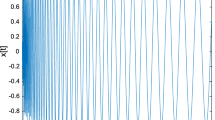Abstract
High-resolution mapping makes it possible to reconstruct and display the conduction pattern of the action potential as it propagates through cardiac or smooth muscles. During slow and regular activity, time mapping of the spread of activation is relatively simple and straightforward. However, when frequencies are high or conduction is slow, such as seen during atrial fibrillation or found in the pregnant uterus, the tracking of individual waves may become more difficult and uncertain. In order to reconstruct the pathway of a single wave, a search and sorting routine was developed which makes it possible to distinguish, track and display individual wavelets. The algorithm is able to detect variations in conduction block, spontaneous shifts in the location of the pacemaker and changes in the direction of conduction. It is less sensitive when two or more wavefronts intermingle in space and time, such as during collision or fusion. Wave mapping is especially useful, in addition to current time mapping, in sorting quickly through the large amount of data produced by high-resolution mapping of electrical activities in cardiac and smooth muscle.
Similar content being viewed by others
References
De Bakker, J. M. T., van Capelle, F. J. L., Janse, M. J., Tasseron, S., Vermuelen, J. T., de Jonge, N., andLahpor, J. R. (1993): ‘Slow conduction in the infarcted human heart: ‘Zigzag’ course of activation’,Circulation,88, pp. 915–926
Hoeks, A. P. G., Schmitz, G. M. L., Allessie, M. A., Jas, H., Hollen, S. J., andReneman, R. S. (1988): ‘Multichannel storage and display system to record the electrical activity of the heart’,Med. Biol. Eng. Comput.,26, pp. 434–438
Ideker, R. E., Smith, W. M., Wallace, A. G., Kasell, J., Harrison, L. A., Klein, G. J., Kinicki, R. E., andGallagher, J. J. (1979): ‘A computerized method for the rapid display of ventricular activation during the intraoperative study of arrhythmias’,Circulation,59, pp. 449–458
Kirchhof, C., Chorro, F., Scheffer, G. J., Brugada, J., Konings, K., Zetelaki, Z., andAllessie, M. (1993): ‘Regional entrainment of atrial fibrillation studied by high-resolution mapping in openchest dogs’,Circulation,88, pp. 736–749
Lammers, W. J. E. P., Kirchhof, C., Bonke, F. I. M., andAllessie, M. A. (1992): ‘Vulnerability of rabbit atrium to reentry by hypoxia: role of inhomogeneity in conduction and wavelength’,Am. J. Physiol.,262, pp. H47-H55
Lammers, W. J. E. P., Al-Kais, A., Singh, S., Arafat, K., andElsharkawy, T. Y. (1993): ‘Multi-electrode mapping of slow wave activity in the isolated rabbit duodenum’,J. Appl. Physiol.,74, pp. 1454–1461
Lammers, W. J. E. P., andEl-Sarkawy, T. Y. (1994): ‘Development and potential of high-density electrical mapping in the gastrointestinal system’,Int. Pharmacy J.,8, pp. 13–17
Mendler, P., Parson, I., andDownar, E. (1980): ‘Multichannel recording of cardiac potentials’,Med. Biol. Eng. Comput.,18, pp. 617–624
Simpson, E. V., Ideker, R. E., Cabo, C., Yabe, S., Zhou, X., Melnick, S. B., andSmith, W. M. (1993): ‘Evaluation of an automatic cardiac activation detector for bipolar electrograms’,Med. Biol. Eng. Comput.,31, pp. 118–128
Wit, A. L., Allessie, M. A., Bonke, F. I. M., Lammers, W. J. E. P., andSmeets, J. L. R. M. (1982): ‘Electrophysiological mapping to determine the mechanism of inducible ventricular tachycardia: experimental approach and initial results demonstrating reentrant excitation,’Am. J. Cardiol.,49, pp. 166–185
Wit, A. L., Tischler, A. A., andDillon, S. (1986): ‘Mapping impulse propagation in the heart: an approach to the study of arrhythmogenesis,’Int. J. Cardiac Imaging,2, pp. 65–70
Author information
Authors and Affiliations
Rights and permissions
About this article
Cite this article
Lammers, W.J.E.P., El-Kays, E., Arafat, K. et al. Wave mapping: detection of co-existing multiple wavefronts in high-resolution electrical mapping. Med. Biol. Eng. Comput. 33, 476–481 (1995). https://doi.org/10.1007/BF02510533
Received:
Accepted:
Issue Date:
DOI: https://doi.org/10.1007/BF02510533




